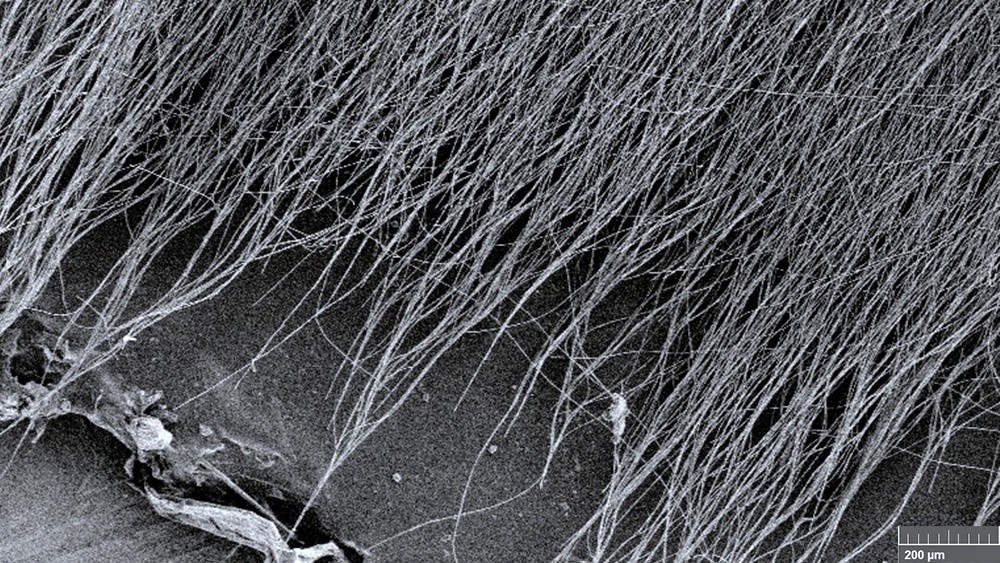Antioxidants are important for fighting the process of oxidation, which can spoil food and alcohol and harm cells in the body. Now, researchers at Texas A&M University have woven antioxidants into nanofiber mats, which release the vital compounds slowly and could be useful for food coverings or bandages.
Oxidation is a chemical reaction that, in simple terms, strips electrons out of an atom or molecule. The best known example might be when iron reacts with oxygen and becomes rusty, but it also naturally occurs in the body. Unstable atoms called free radicals steal electrons from other molecules in the body, causing cellular damage known as oxidative stress. Oxidation also occurs when foods or alcohol are exposed to the air for too long, often ruining the taste or nutrition.
Antioxidants, as the name suggests, counter the oxidation process by essentially donating electrons to free radicals or binding with oxygen in the air. That’s why foods and drinks are so quick to boast about being high in antioxidants.
But it can be hard to steadily deliver antioxidants where they’re needed for longer periods of time. And that’s just the problem the new study set out to tackle. The researchers used an antioxidant called tannic acid, which is found in red wine and is particularly potent. On top of that, it’s also antibacterial and antiviral.
“Polyphenols are natural organic compounds that are also known for their antioxidant properties,” says Hanna Hlushko, a primary author of the study. “Turns out that the tannic acid is replete with these polyphenol motifs, which make it an efficient binding partner to many molecules and a great scavenger of free radicals.”

Svetlana Sukhishvili
So the team turned it into antioxidant meshes. The researchers spun ultrafine fibers out of a polymer called polyvinylpyrrolidone, which can hold firmly onto molecules of tannic acid. These meshes were found to be mechanically strong, yet flexible like cloth, allowing them to wrap around objects. But most importantly, they were able to slowly release the antioxidants over time.
“We have created antioxidant mats with a high surface area, robust mechanical properties and the ability to provide long-term antioxidant protection,” says Adwait Gaikwad, a primary author of the study. “Also, the release of tannic acid is on-demand — the hydrogen bonds hold the antioxidants in the material until there is an external stimulus, like pH. These properties make our mats suitable for diverse applications, from bandages for wound-healing to inner linings of containers for food storage.”
The research was published in the journal ACS Applied Materials & Interfaces.
Source: Texas A&M University
Source of Article